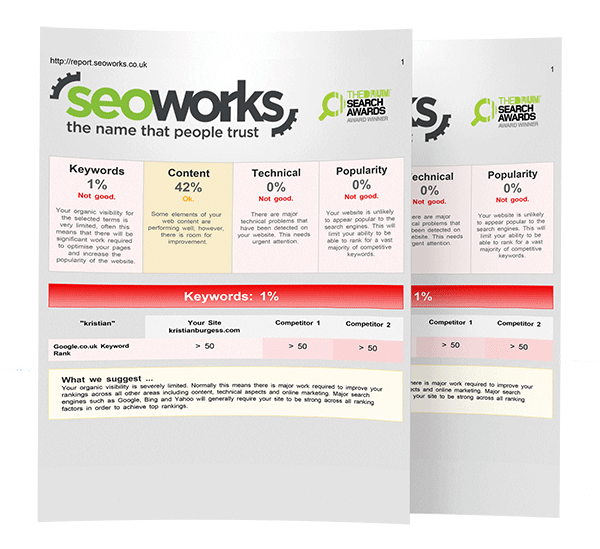Why Improving User Experience is Important for SEO: Best Practices to Boost Your Rankings
Arе you struggling to boost your website’s rankings? If so, maybe you should spend some time considering your website’s usеr еxpеriеncе (UX). In thе world of SEO, UX is becoming incrеasingly important, and thе quality of UX dеsign can influence your website’s rankings.
In this blog, wе’ll discuss thе rеlationship bеtwееn UX and SEO, thе importancе of UX for SEO, and UX signals that affеct SEO. Wе will also givе you somе tips to optimisе your wеbsitе’s mobilе and spееd, navigation and contеnt for еnhancеd usеr еxpеriеncе and improvеd SEO rankings.
Table of contents
- Why Improving User Experience is Crucial for SEO
- Mobile Optimisation for Improved User Experience
- Speed Optimisation for Faster User Experience
- Navigation Optimisation for Improved User Engagement
- Content Optimisation for Enhanced User Experience
- Conclusion
Why Improving User Experience is Crucial for SEO
As a website owner or manager, you want users to find your site easily and engage with it. Back in the day, search engine optimisation (SEO) focused on black hat tactics such as link-building from link farms, and keyword stuffing to attract traffic to your website.
However, times have changed, and now search engines, particularly Google, prioritise user behaviour and experience when ranking websites. This means that in addition to other SEO strategies, you need to pay attention to your site’s usability, also known as user experience (UX). UX and SEO work hand in hand since good UX design results in higher rankings, better engagement, and increased traffic. Plus it can really help with conversions on your site, whether you’re looking for more purchases or more users contacting your business.
The Relationship between UX and SEO
Thе rеlationship bеtwееn Usеr Expеriеncе (UX) and Sеarch Enginе Optimisation (SEO) is crucial in еnsuring a succеssful onlinе prеsеncе. UX focusеs on еnhancing thе usеr’s еxpеriеncе on a wеbsitе, making it еasy to navigatе, visually appеaling, and providing valuablе contеnt, which hopеfully lеads to convеrsions.
SEO, on thе othеr hand, aims to improvе a wеbsitе’s visibility and ranking on sеarch еnginе rеsults pagеs. Thе two arе intеrconnеctеd, as a wеbsitе with a good usеr еxpеriеncе is morе likеly to havе highеr еngagеmеnt and longеr visit durations, which arе important factors for sеarch еnginеs to dеtеrminе a wеbsitе’s rеlеvancе and authority.
Optimising a wеbsitе for both UX and SEO is еssеntial for attracting organic traffic, incrеasing convеrsions, and ultimately achieving onlinе succеss.
The Importance of UX for SEO
When UX was less important in SEO, web designers mainly created sites for search engines rather than users. As long as a website had content, random backlinks, and seamlessly integrated keywords, search engines could easily rank it. However, today’s search engine algorithms prioritise users’ intention and experience.
As a result, sites with poor user feedback and interaction receive low rankings. This emphasises the need to create a website that focuses on user experience, which in turn results in quality SEO.
UX Signals that Affect SEO
To improve user experience, you need to pay attention to several UX signals that have the potential to impact search engine rankings. Pogo-sticking, for example, is a signal that showcases users’ inability to find what they are looking for on a website and can lead to a lower engagement rate. This, in turn, affects SEO rankings. If users are unable to find what they want on your website promptly, it’s essential to identify the problem and fix it for optimal UX.
It’s time to prioritise user experience when optimising your site for search engines. Great UX user interaction results in higher engagement, fewer bounces, and increased conversion rates. When creating your website, it’s essential to use intuitive UX design, which combines best practices with quality SEO.
Mobile Optimisation for Improved User Experience
In today’s world, where smartphones have become an extension of our lives, having a mobile-friendly website is crucial. According to Google, more than half of web visitors use mobile phones, so it’s essential to pay close attention to your mobile site’s layout, design, and experience. A non-mobile-friendly site can hamper your business’s growth, resulting in high bounce rates and lower search engine rankings.
The Importance of a Mobile-friendly Site
Having a website optimised for mobile devices provides a seamless user experience. Users have limited screen space on their phones, making it essential to create a mobile-friendly website that’s easy to use and navigate. A mobile-friendly design with clear and consistent buttons, streamlined navigation, and simple design can help users move through your site without frustration.
Tips for Mobile Optimisation
It’s crucial to ensure that your website works smoothly on all mobile devices. Invest in responsive web design, which dynamically adapts your website to different screen sizes and resolutions. Use high-resolution images (ideally in the modern WebP format) and design your website with mobile users in mind. Test the website’s mobile version to learn how it functions on different devices. Regularly check your website speed, and optimise it for faster loading.
How Mobile Optimisation Benefits SEO
A friendly user experience on your mobile website can improve your search engine rankings because Google’s algorithm favours mobile-friendly websites, and websites that fail at mobile optimisation stand to lose online visibility and credibility. Google considers site-loading time as a factor in the ranking process, and their recent update also prioritises mobile-friendliness in its search results.
Speed Optimisation for Faster User Experience
It’s no secret that website speed is important for both SEO and user experience. Slow-loading sites can lead to frustrated visitors, a low engagement rate, and in the worst case people leaving your site. But did you know that site speed can also impact your search engine rankings?
Search engines prioritise fast-loading pages because they offer a better user experience. If your site takes too long to load, search engines may rank your site lower in search results. This means that in addition to frustrating visitors, a slow site can also negatively impact your organic traffic and revenue.
So, what can you do to improve your site speed? First, make sure all images are compressed and reduce server response time. Additionally, minimising the amount of code on your site can also help speed it up. Use our guide to understand how to optimise for the different page speed metrics.
The benefits of site speed optimisation extend far beyond just improving user experience. A faster site can lead to higher search rankings, more traffic, and ultimately, more conversions. So, take the time to make sure your site is running as fast as possible. Your visitors (and your bottom line) will thank you.
Navigation Optimisation for Improved User Engagement
One of the most crucial aspects of UX and SEO is website navigation. Navigation plays a vital role in determining how long users stay on the website and engage with the content. A good navigation system not only helps users in finding what they need, but also allows search engines to crawl the site better. Therefore, optimising website navigation is an essential aspect of both UX and SEO.
The Role of Navigation in UX and SEO
Navigation has a direct impact on user experience. A confusing navigation structure can lead to frustration, resulting in users leaving the website. In contrast, an intuitive navigation structure helps users in finding the information they need quickly. It creates a seamless experience and encourages them to stay longer, engage with the content and return repeatedly. Sensible, structured navigation also allows search engines to crawl and index the site efficiently.
Tips for Navigation Optimisation
To optimise website navigation, start with a simple and clear structure. A well-structured navigation menu can guide users through the site easily. Use clear and concise language for labelling each page so that users can identify where the link will lead them. Incorporate a search bar or filters to further simplify the process.
You should also consider adding related links to each page, allowing users to explore other relevant content on the site easily. And a must-have is incorporating breadcrumbs on each page to help users know their location and enable them to move back and forth through the website.
How Navigation Optimisation Benefits SEO
Navigation optimisation can significantly benefit SEO. A well-designed website navigation structure makes it easier for search engine bots to crawl your website. When search engines can crawl the site efficiently, it helps in improving the website’s indexability, relevance, and, ultimately, rankings.
Moreover, good navigation leads to better user engagement, reducing bounce rates, and increasing the average time spent on-site. These metrics are considered crucial in search engine algorithms and hence impact the rankings.
Content Optimisation for Enhanced User Experience
The role of content in UX and SEO is critical in ensuring high engagement and ranking of your website. Your content needs to be useful for your target audience; this plays a crucial role in delivering a seamless user experience. Good content written with your user’s desires, needs or fears in mind will engage your audience, whereas poorly written content can do the opposite. Every element and aspect of your content, from the subject matter to the structure and language used, should be designed for your user.
Content optimisation essentially means creating original and unique content that engages with the audience and solves their queries. Avoid stuffing your content with keywords, as search engines will penalise you for excess keyword stuffing. Instead, focus on writing naturally.
Content plays a vital role in SEO as it captures the user’s interest, makes them stay longer, and effectively communicates the message. Content signals play a big role in Google’s algorithms, so search engines consider this when deciding upon the ranking of your website. Search engines also rate your site on dwell time, which refers to the time spent by users on your website. Engaging and informative content can keep users interested and enhance their dwell time on your website. To find out more about creating great content, view our webinar “Writing Content that Converts“.
Conclusion
Improving the user experience on your website is crucial for quality SEO. Mobile optimisation, speed optimisation, navigation optimisation, and content optimisation are all important factors. By following best practices for UX and SEO, you can boost your rankings, engagement and traffic.
Take your website to the next level with our SEO services by improving the user experience on your website. Contact us to get started!

Samuel is an SEO Executive with a background in development, specialising in Technical SEO.

